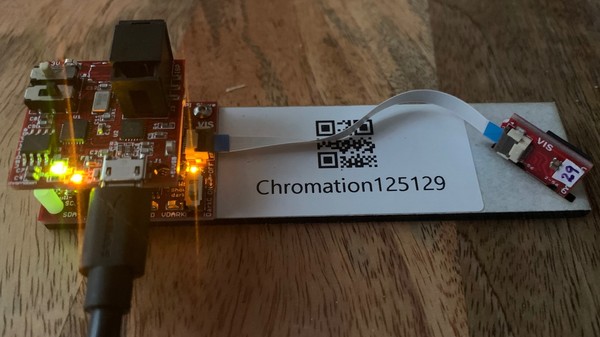dev-kit-2020
Introduction

Reasons to use Chromation’s Development kit:
- evaluate Chromation’s spectrometer technology
- design a product using Chromation’s spectrometer chip
Dev-kit setup and usage
Please see additional information about setting up and using:
- the dev-kit hardware
- see DEV-KIT.md
- the dev-kit Python interface
- see PYTHON.md
Windows users: please enable “Load VCP”.
See PYTHON-SETUP.md for steps starting on a Windows or Linux system without Python.
Dev-kit circuit boards
Each interface has its own circuit board. So the dev-kit divides into three printed circuit boards (PCBs):
vis-analog-out- breakout board for Chromation
CUVV-45-1-1-1-SMT - direct analog interface to the spectrometer chip
- converts the QFN-48 chip to ZIF-8
- breakout board for Chromation
vis-spi-out- SPI interface to Chromation
CUVV-45-1-1-1-SMT
- SPI interface to Chromation
usb-bridge- converts SPI interface to USB interface
Circuit board names
The names of the circuit boards are the names used in the hardware and firmware files.
vis refers to the CMOS image sensor 300-1100nm wavelength range
The vis prefix is short for visible spectrum, as opposed to
UV (ultra-violet) or IR (infrared).
The Chromation spectrometer chip uses a CMOS image sensor. The
image sensor peaks in the visible part of the wavelength
range, so the breakout and readout boards are prefixed with the
name vis.
The visible wavelength range is 400-700nm. This is not what
vis refers to.
Chromation’s vis spectrometer spans the full wavelength
sensitivity range of standard CMOS image sensors, roughly
300-1100nm. This range includes UV and NIR
(near-infrared), but CMOS image sensor sensitivity is weak at the
tail ends of this range. The exact wavelength range is provided
with the spectrometer’s wavelength calibration data.